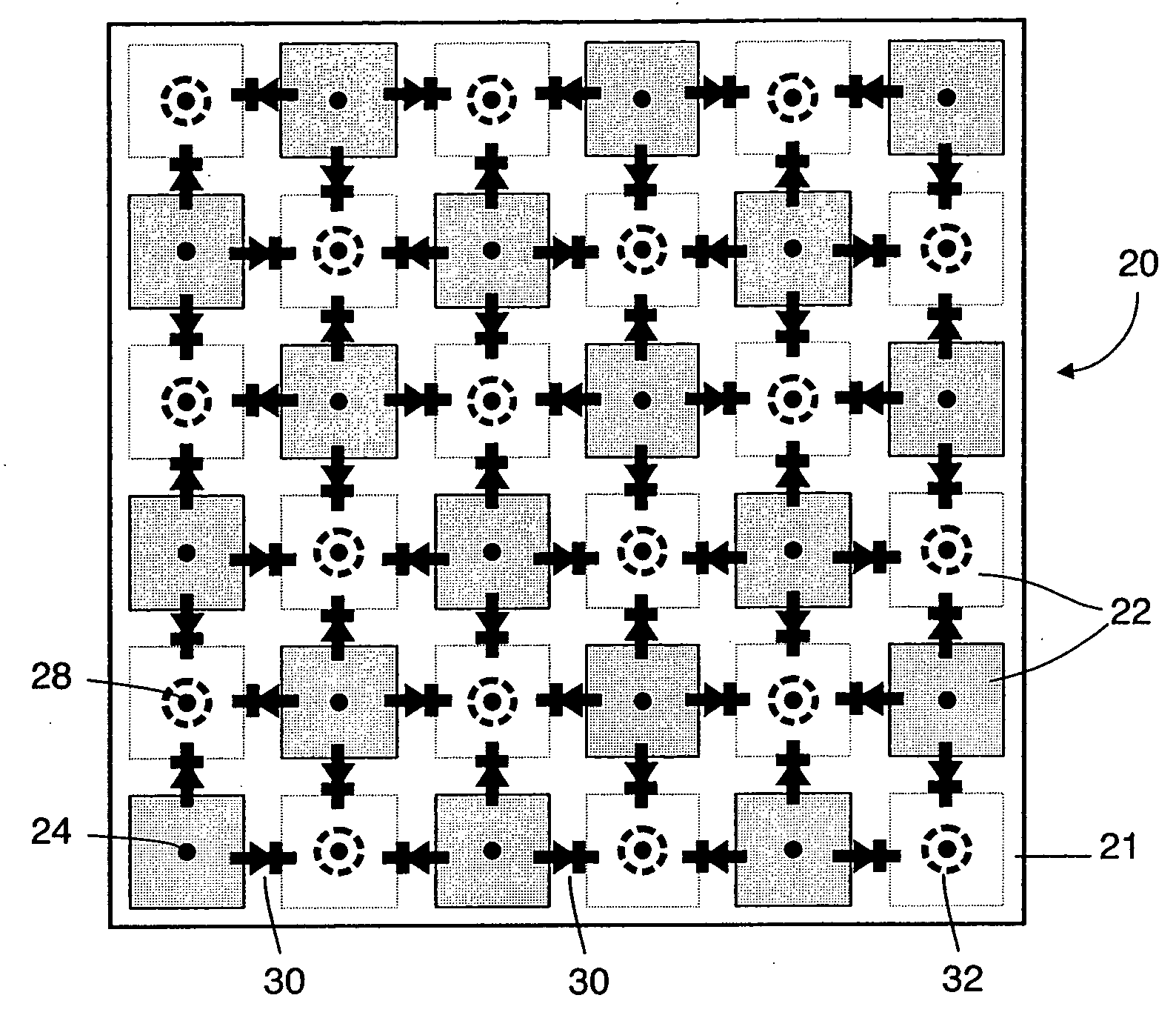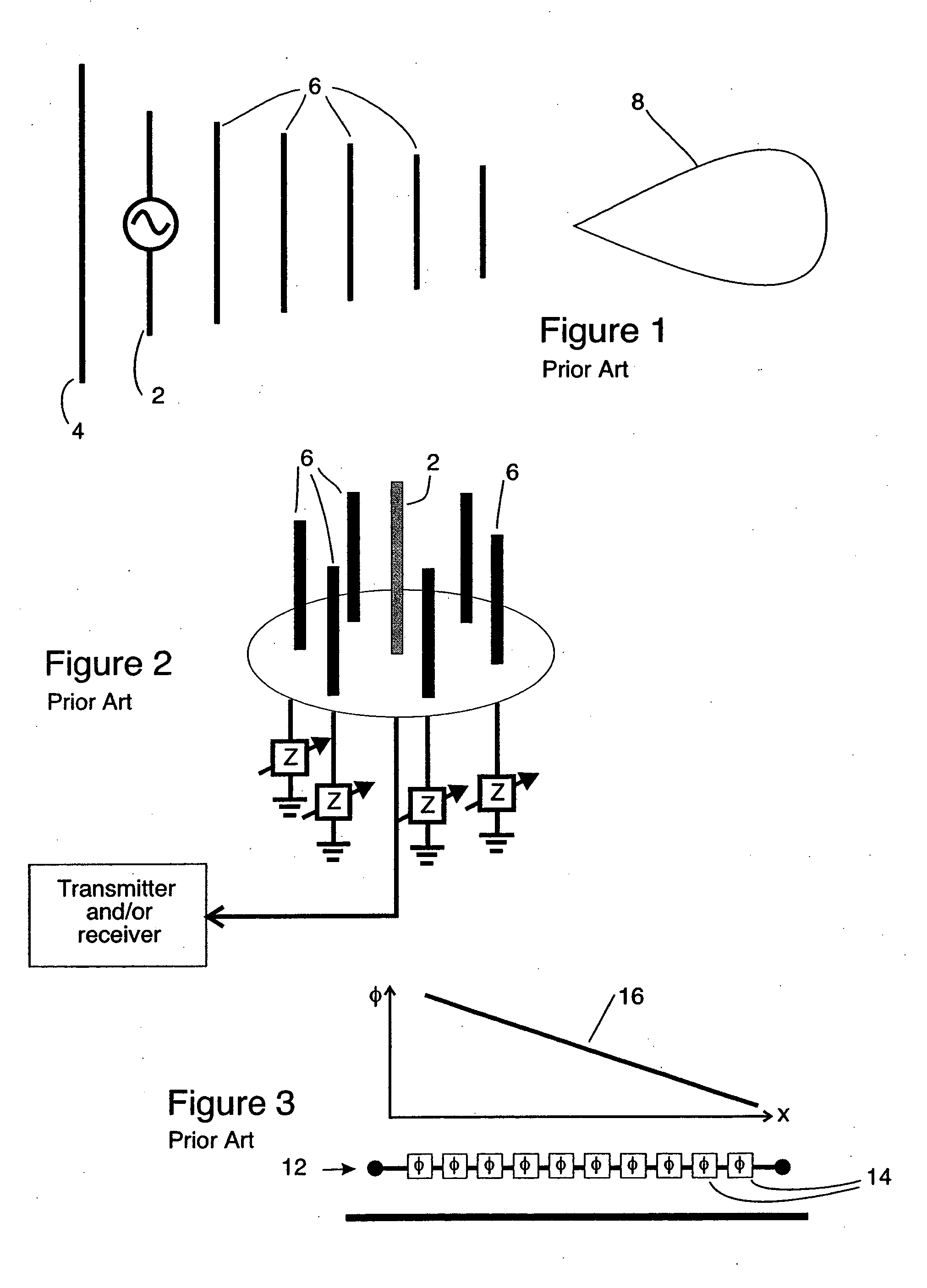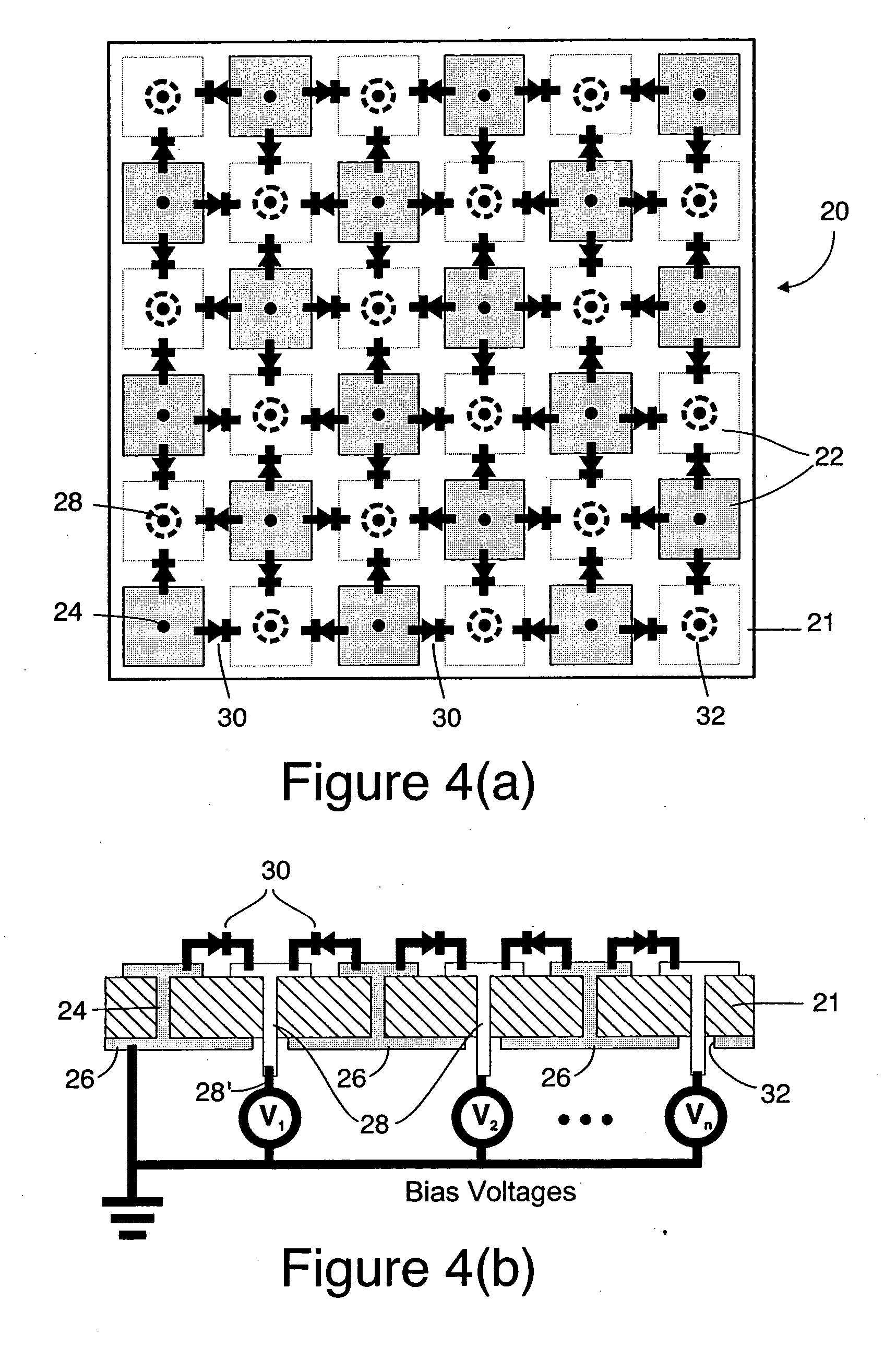Meta-element antenna and array
a technology of metal elements and antennas, applied in the direction of individual energised antenna arrays, resonant antennas, radiating elements structural forms, etc., can solve the problems of many communication and sensing systems that are impractical today, lack of simple means of feeding the antenna with an arbitrary waveform or receiving a signal, and high cost and complexity
- Summary
- Abstract
- Description
- Claims
- Application Information
AI Technical Summary
Problems solved by technology
Method used
Image
Examples
Embodiment Construction
[0051] It has been known for decades that parasitic antenna elements can also be used for beam forming, such as the popular Yagi-Uda array 10, shown in FIG. 1. This array 10 consists of three kinds of elements: (1) a single driven element 2, (2) a reflector element 4, which is typically longer or has a lower resonance frequency than the driven element 2, and (3) a series of director elements 6, which are typically shorter or have a higher resonance frequency than the driven element 2.
[0052] The Yagi-Uda array 10 works as follows: The driven element 2 radiates power, which is received by all of the parasitic elements, which comprise the reflector element 4 and the director elements 6. These parasitic elements 4, 6 re-radiate the power with a phase that depends on the resonance frequency of the parasitic elements with respect to the frequency of the driven element 2. The radiation from the parasitic elements 4, 6 adds with the radiation from the driven element 2 with the appropriate p...
PUM
 Login to View More
Login to View More Abstract
Description
Claims
Application Information
 Login to View More
Login to View More - R&D
- Intellectual Property
- Life Sciences
- Materials
- Tech Scout
- Unparalleled Data Quality
- Higher Quality Content
- 60% Fewer Hallucinations
Browse by: Latest US Patents, China's latest patents, Technical Efficacy Thesaurus, Application Domain, Technology Topic, Popular Technical Reports.
© 2025 PatSnap. All rights reserved.Legal|Privacy policy|Modern Slavery Act Transparency Statement|Sitemap|About US| Contact US: help@patsnap.com



